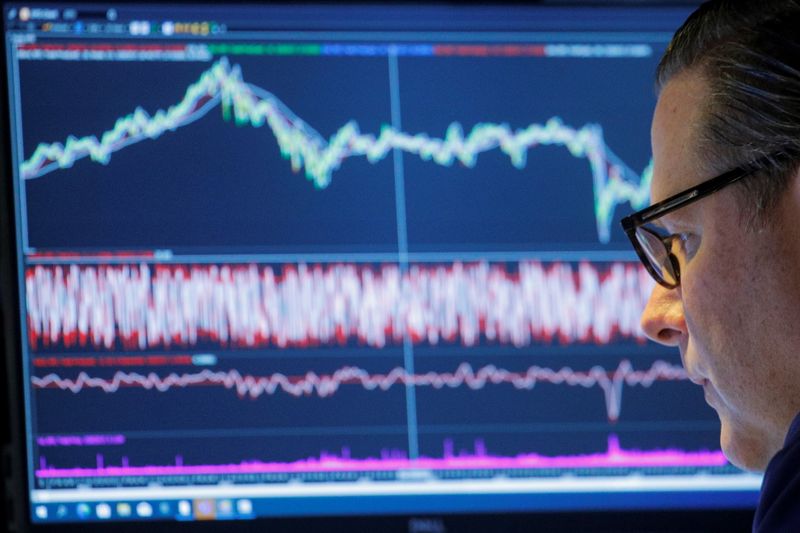S&P 500 volatility may stay elevated in 2025: UBS
Investing.com -- UBS anticipates that S&P 500 volatility will remain elevated throughout 2025, driven by macroeconomic uncertainty, shifting policy rates, and geopolitical risks.
“We think the low index volatility regime of 2024 is over,” UBS strategists led by Gerry Fowler said in a Tuesday report.
UBS notes that the global economy continues to experience lingering disruptions from the Covid era, though less from social or political factors and more from challenges within business and market cycles.
With government stimulus largely depleted, nominal growth is expected to slow, particularly in China and the US. Regional disparities in economic activity may persist, driven in part by President Trump’s America-first policies. However, the divide between the services and manufacturing sectors could narrow.
“Slower nominal growth and rate cuts have historically led to elevated volatility and volatility-of-volatility with gyrations often driven by uncertainty around whether the slowdown includes rising unemployment or a mid-cycle slowdown,” analysts continued.
Until this becomes clearer, markets are likely to experience intermittent spikes in volatility , strategists said, particularly in response to growth-related data. Moreover, the possibility of significant policy changes under Trump’s administration could add another layer of unpredictability to the economic outlook.
The potential escalation of tariff tensions under the current administration further complicates the outlook. UBS points out that tariffs could have significant redistributive effects across regions, economic sectors, and companies.
European equities and banks are seen as particularly vulnerable, though “the uncertainty in tariff pass-through mechanisms is highest in the US, which has global implications,” strategists explained.
UBS expects the VIX , a key measure of market volatility, to average around 20% in 2025, notably higher relative to 2024.
“We also think volatility-of-volatility will remain high, with VVIX likely averaging 110% or more,” strategists highlighted.
UBS also mentions that recent high earnings dispersion, driven by strong profit growth in large US tech stocks, is expected to narrow as mega-cap tech growth aligns with the broader market. This could ease pressure on stock correlations, which have kept volatility low.
However, early 2025 earnings may highlight concerns that hyperscaler capex estimates lag behind NVIDIA's (NASDAQ:NVDA ) revenue forecasts. Strategists warn that weaker earnings revisions could increase stock correlation, driving higher volatility throughout the year.
Source: Investing.com
